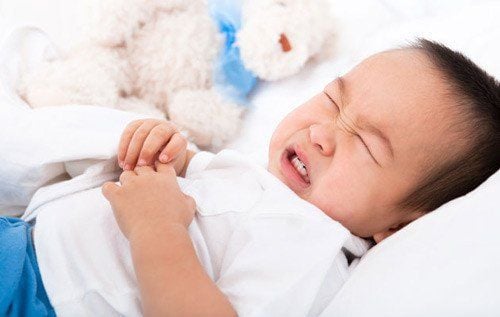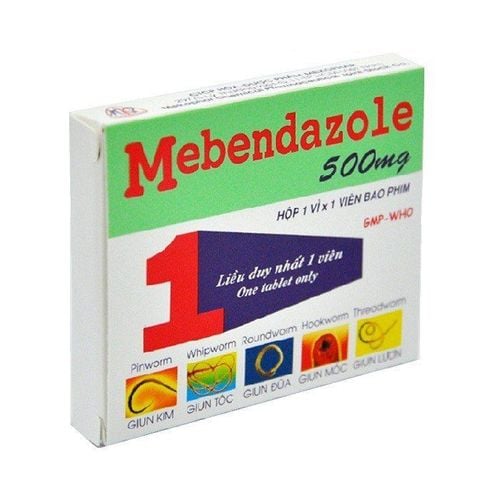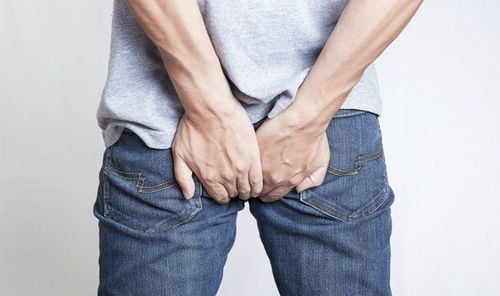This is an automatically translated article.
Children are the most susceptible to helminthic diseases, especially hookworms, pinworms, and whipworms that often attack children or combine to leave many dangerous complications. The prevention of helminths works to reduce the risk of infection as well as limit the complications caused by helminths.
1. Causes of helminth infections
The cause of helminth infections in children is through eating, eating unclean food, not thoroughly cooked, drinking unboiled water or eating raw vegetables that have not been washed.
In addition, children can be infected with helminths when they come into contact with dirty hands, unhygienic water sources, through daily activities in direct contact with the soil environment or through contaminated air.
Children in the weaning age can get worms when handling food without washing their hands after going to the toilet, putting dirty toys in their mouths,...
2. Types of helminths often cause disease in children
Children in developing countries, especially in tropical countries, including Vietnam often get worms such as ascariasis, pinworms, hookworms, and whipworms. trichuris). When children are infected with different types of worms, the symptoms will also be different. In many cases, children are infected with a combination of 2 to 3 types of worms at the same time. The following are symptoms when infected with common worms:
Roundworm: Transmitted by eating or drinking, by swallowing worm eggs in soil contaminated with human feces. The disease is not transmitted directly from person to person. Children infected with roundworm have no specific clinical symptoms. Sometimes, live worms are excreted in the feces or out through the mouth and nose. Severe consequences of roundworm are intestinal obstruction, biliary obstruction or appendicitis caused by worms. Hookworm, beakworm: Transmitted by skin, mucous membranes: hookworm/beakworm larvae enter the human body through the skin, mucous membranes (between toes, shins...) through veins to the heart, lung. Through eating and drinking: food, water contaminated with larvae. Children infected with hookworms have no specific clinical symptoms, but mainly anemia (blue skin, pale mucous membranes) and epigastric pain depending on the degree of worm infection. Pain does not have a fixed time, when hungry more pain, loss of appetite, indigestion. When hookworm/beakworm larvae penetrate the skin, it can cause local dermatitis with symptoms of itching, red spots and disappear after 1-2 days. Dermatitis is more commonly caused by hookworms than hookworms. Hairworms: People are infected with hairworms by eating or drinking eggs of hairworms that have grown in the environment to the larval stage. Most children infected with hairworms have no specific clinical symptoms. Some patients have dysentery-like syndrome such as: abdominal pain in the colon, straining, defecation many times a day, stools are small and have a lot of mucus and blood like fish blood. Patients infected with hairworms may develop an allergic rash, multiple and prolonged infections may cause hypochromic anemia, a systolic murmur, and mild edema. Pinworms: Transmitted by eating, by scratching the anus with pinworm eggs and then holding food, or by sucking on the thumb in young children. Children infected with pinworms often have anal itching and nocturnal scratching, fussiness; With the naked eye, the female pinworm can be seen at the anal margin. When a child defecates solid stools, pinworms can be seen on the edge of the stool mold.
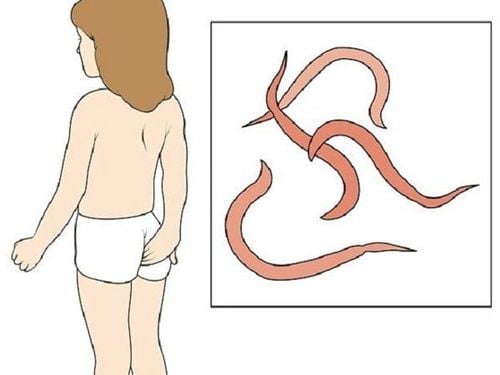
Trẻ em bị nhiễm giun kim thường ngứa hậu môn
Worms: Spread through food: eat raw, eat rare, eat blood soup and meat products (mainly pork) infected with undercooked helminth larvae. Roundworms are not transmitted directly from person to person. Clinical manifestations of helminth infection include the following basic symptoms: Eyelid edema is an early and characteristic sign of the disease, sometimes edema of the head or spreading to the neck and upper extremities. Sometimes eyelid edema accompanied by bleeding under the cornea, retina. Muscle pain occurs when breathing deeply, coughing, chewing, swallowing, defecating, pain in the face and neck, pain when moving, and when eating and speaking. Pain leads to muscle spasms and limited range of motion. Mild fever gradually increases, after 2-3 days the body temperature rises to 39-40oC. Other symptoms may include diarrhea, extreme thirst, excessive sweating, chills, and fatigue. Wormworm infection can cause dangerous cardiovascular and neurological complications: in severe cases, death from myocardial failure can occur in the first or second week. Complications can appear in the second week. 3 4 of diseases such as myositis, pneumonia, and encephalitis are fatal. Depending on the degree of infection with helminth larvae, the mortality rate is from 6-30%. Tapeworms: Usually no symptoms, some babies may have abdominal pain, fatigue, weight loss and diarrhea Liver fluke: Symptoms of liver flukes are also not obvious, can be a rash, pain, itching, muscle aches, cold and fever.

Hình ảnh sán lá gan
3. Consequences of helminth infections in children
Digestive disorders: abdominal pain around the navel, nausea, vomiting, bowel disorders (constipation, diarrhea), intestinal worms causing intestinal obstruction, intestinal perforation due to worms Anorexia Malnutrition: emaciation, weight loss Weight loss, growth retardation Anemia: headache, paleness, fatigue Decreased intelligence, poor learning, inactivity Allergies: sometimes itchy skin rashes appear.

Nhiễm giun sán có thể gây suy dinh dưỡng ở trẻ em
4. Prophylaxis of helminths in children
To protect children from helminth infections, parents need to pay attention to the following things:
Sanitation of living environment: Use hygienic latrines, do not defecate indiscriminately into the environment, do not use feces Fresh or not well composted to fertilize plants, do not let dogs and chickens release parts that pollute the environment. For children to eat cooked, drink boiled, should not eat raw vegetables, when eating vegetables need to be washed and peeled Regularly cut fingernails for children Instruct children to wash their hands with soap before eating and after going to the toilet Wear shoes often, especially when going to the garden, sandy soil Periodic deworming for children: give children Mebendazole 500mg or Albendazole 400mg 1 tablet, every 6 months. Consult a doctor if your child is under 2 years old, has an acute illness or has ever had a drug allergy.
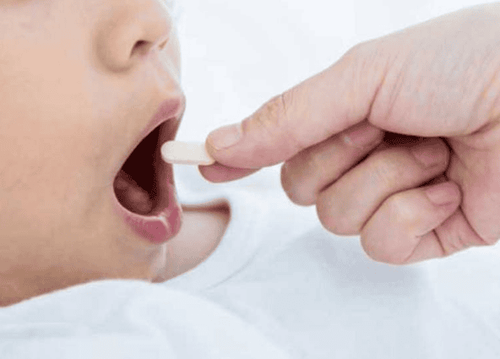
Tẩy giun cho trẻ trên 2 tuổi định kỳ 6 tháng 1 lần là biện pháp phòng bệnh giun sán hiệu quả.
The current state of helminth infections in our country is alarmingly high. Therefore, everyone needs to take effective preventive measures. First of all, it is necessary to immediately eliminate the habits that make children susceptible to diseases, and build a safe and healthy lifestyle. In addition, parents need to observe unusual manifestations to promptly detect the disease and do not forget to periodically deworm their children every 6 months.
To protect children from agents that affect their health, you need to monitor and take them to a doctor when there are abnormal symptoms.
In addition, in order to prevent diseases that young children often get, parents should pay attention to nutrition to improve children's resistance. At the same time, add supporting foods containing lysine, essential micro-minerals and vitamins such as zinc, chromium, selenium, B vitamins,... snacks and less digestive problems.
Parents can learn more:
Why do you need to supplement Lysine for your baby?
The role of zinc - Guidelines for reasonable zinc supplementation
Please visit the website Vinmec.com regularly and update useful information to take care of your baby and family.




